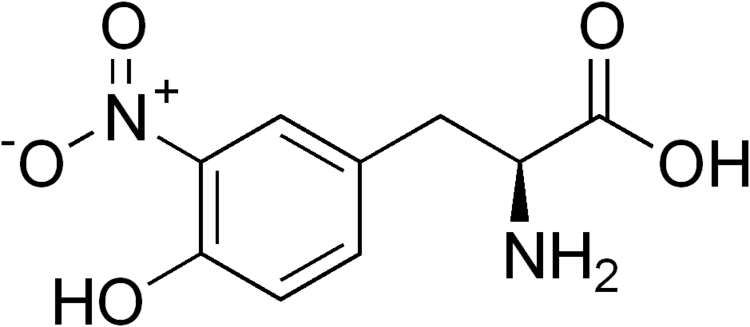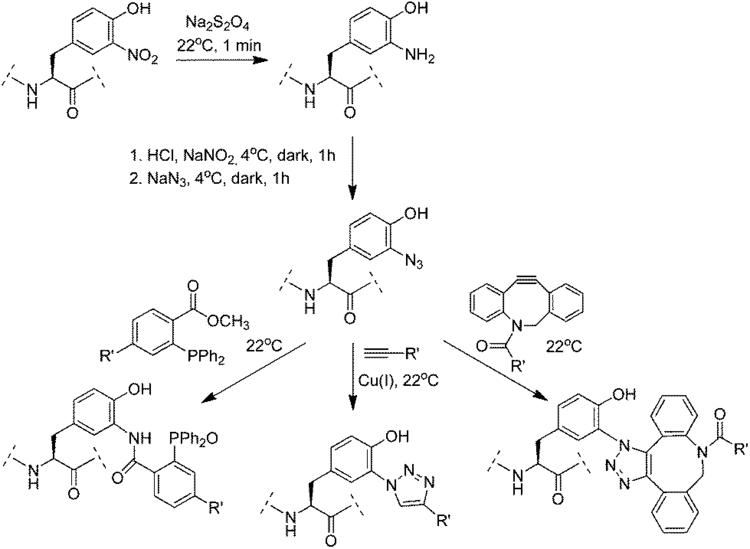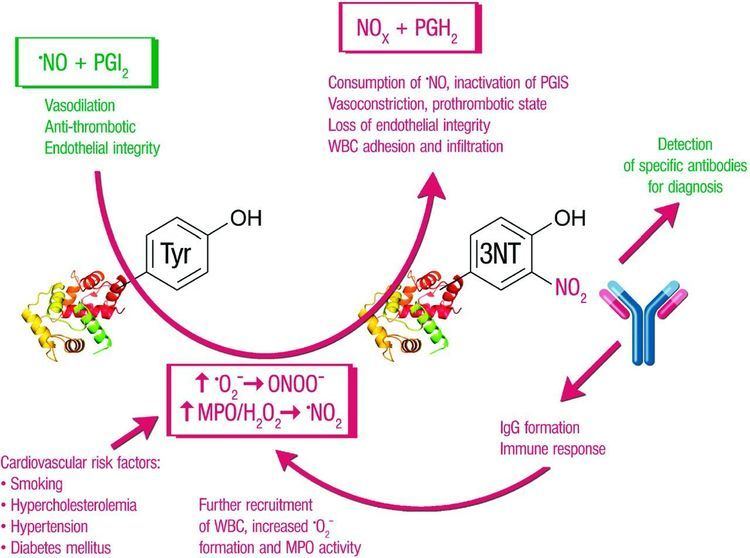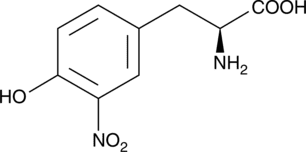Formula C9H10N2O5 Pubchem 65124 | Molar mass 226.19 g/mol | |
 | ||
Appearance Yellow to green crystalline solid | ||
Nitrotyrosine site in erk1 not in the substrate cleft
Nitrotyrosine is a product of tyrosine nitration mediated by reactive nitrogen species such as peroxynitrite anion and nitrogen dioxide. Nitrotyrosine is identified as an indicator or marker of cell damage, inflammation as well as NO (nitric oxide) production. Nitrotyrosine is formed in the presence of the active metabolite NO. Generally in many disease states, oxidative stress increases the production of superoxide (O2−) and NO forming peroxynitrite (ONOO−) a destructive free radical oxidant. The production of ONOO− is capable of oxidizing several lipoproteins and of nitrating tyrosine residues in many proteins. It is difficult to determine the production of ONOO− so, usually nitrotyrosine in proteins are the detectable marker for indirectly detecting ONOO−. It is detected in large number of pathological conditions and is considered a marker of NO-dependent, reactive nitrogen species-induced nitrative stress. Nitrotyrosine is detected in biological fluids such as plasma, lung aspirants-BALF (Broncho alveolar lining fluid) and urine. Increased level of nitrotyrosine is detected in rheumatoid arthritis septic shock and coeliac disease. In all these studies nitrotyrosine was undetected in healthy subjects. Nitrotyrosine is also found in numerous other disease-affected tissues, such as the cornea in keratoconus. Peroxynitrite and/or nitrative stress may participate in the pathogenesis of diabetes
Contents

Research shows that nitrotyrosine levels can be reduced by N-acetyl cysteine, which is a precursor to glutathione, one of the body's primary endogenous antioxidants. Nitrotyrosine levels have been linked to cerebral ischemia and edema, for which NAC has also been proven as a potential treatment.
Free nitrotyrosine undergoes metabolism to form 3-nitro-4-hydroxyphenylacetic acid (NHPA) which is excreted in the urine.
How to pronounce nitrotyrosine



